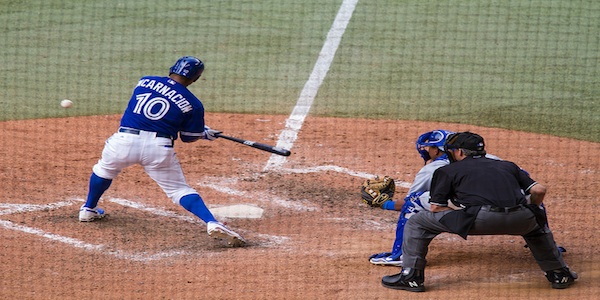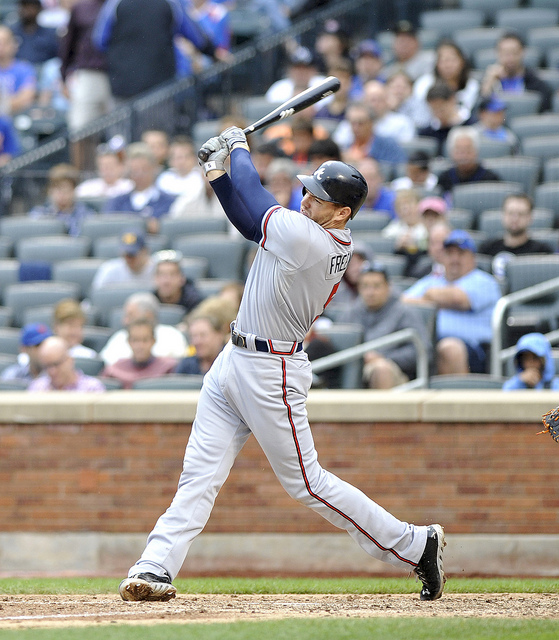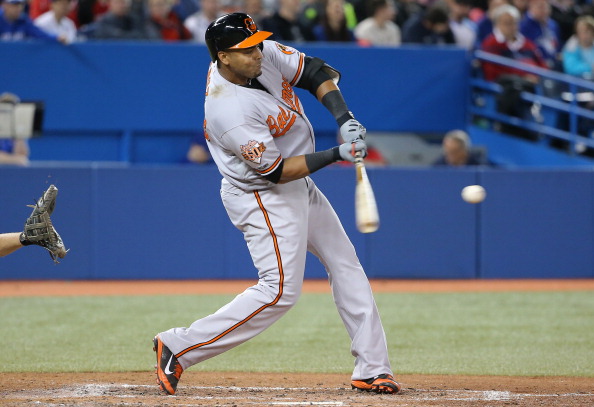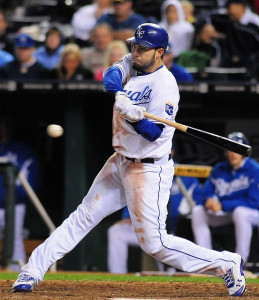2014 Fantasy Baseball: Real Offensive Value — First Basemen, Part I

You cannot find any positions any different than catcher and first base. That being said, there were 17 regular catchers (or at least semi-regular) that were above average in real offensive value. The first base tally is off the charts. So, there will inevitably be some pretty decent first sackers on the sidelines in most standard twelve player leagues.
For those that are just joining us, real offensive value is the marriage of batting average and secondary average. Secondary average calculates everything a player does outside of batting average. So, when you combine the two you get a very good representation of the value of a player. The league average at the mythical half-way point was .245 for ROV. So, when you see the numbers you can roughly compare them to batting average in terms of grading a player’s overall value.
I wouldn’t just leave you with one number though. So, I will also include runs created, wRC+, and runs produced. Runs produced is a more of a rough idea of how many runs a player is producing outside of home runs. It is calculated by adding runs and RBI and subtracting home runs. It gives us an idea of fantasy value even if it is not particularly indicative of a player’s true value.
|
ROV |
RP |
RC |
wRC+ |
|
|
.366 |
95 |
63 |
163 |
|
|
.348 |
82 |
52 |
156 |
|
|
.348 |
74 |
60 |
160 |
|
|
.348 |
69 |
47 |
157 |
|
|
.346 |
97 |
61 |
149 |
|
|
.338 |
80 |
56 |
149 |
|
|
.329 |
50 |
40 |
127 |
|
|
.327 |
47 |
36 |
135 |
|
|
.322 |
79 |
50 |
144 |
|
|
.322 |
47 |
39 |
138 |
This is where we get into a philosophical fantasy argument. One school of thought has you taking the best fantasy player available in each round (including the first rounds). The other school of thought looks for relative value by position. Edwin Encarnacion is the most valuable player according to real offensive value and he is pretty darn close in the all of the numbers. Yet, the question comes in how much better he is than the next best player available at the position.
This becomes particularly interesting when we get outside the top ten and still find some pretty darn good players. No doubt, Miguel Cabrera was taken in the first round in everybody’s draft. Just because he has fallen outside the top ten does not mean he has been a disappointment. He’s tied with Paul Goldschmidt for the most runs produced at the halfway point.
Of course, that begs the question of how valuable any of these players are in comparison with the rest. Six players produced 80 or more runs by the halfway point and another four had between 77 and 79 runs produced. First base is obviously a loaded position and when you throw out run production and just focus on sabermetric numbers then we see 16 players with 120 or more wRC+. You’d almost have to try to find someone that wasn’t at least solid.
However, there were a few interesting names in that top ten that weren’t there when people were completing their drafts. If you should find yourself unlucky enough not to have one of those top 16 guys, you might consider looking these guys up and see if they can be had for a song. Heck, one or two may even be on waivers.
Victor Martinez– Detroit Tigers
If he isn’t owned in your league then it probably oughta be shut down. Then again, Martinez presents some problems because of a lack of position. I put him at first base because he really doesn’t fit anywhere else. He hasn’t caught a game in a couple of years and there isn’t another player he will fit. If your league allows him to be placed at first base you are in good shape. Some leagues only have him eligible at utility.
I’ve never been a big fan of the designated hitter rule because it allows players like Martinez a chance to play everyday when they really aren’t good enough to hold down a position. Be that as it may, I would be negligent not to mention him. He is on pace to have career highs in home runs and perhaps in RBI as well. With a .323 average (at the halfway mark) and a .374 secondary average, he is the real deal.
Adam Laroche– Washington Nationals
Ah, it must be a contract year and indeed it is. Laroche may be out of Washington’s plans following the season, but he is playing himself into a job somewhere. What is scary is that Laroche is traditionally a second half player. He has a career OPS of .779 in the first half and .868 in the second. So, even if you aren’t overwhelmed by the run production numbers, he historically will get better down the line.
Anthony Rizzo– Chicago Cubs
This should not be a surprise and probably constitutes the one thing I’ve gotten right this year. Rizzo always had a longer swing and needed a little time to develop at the big league level. He has officially arrived and appears to be here to stay. The Cubs may have something in the long-term once Kris Bryant makes it to the big leagues. At any rate, he appears to be the first building block of many in Chicago.
Adam Dunn– Chicago White Sox
Dunn still has not announced whether he will seek another contract with the White Sox or any other team. Everyone secretly hopes for athletes to finish off on a good note, so if this is the last hurrah for Dunn I think most people would be happy. Sure, he is flawed. He has a low batting average and he strikes out a lot, but if you play in a walks league or OBP league then you can do a lot worse at first base or utility than Dunn.
Brandon Moss– Oakland Athletics
He was the product of platoon magic the last two seasons and has graduated into one of the top first basemen in the game. In point of fact, this transformation has been slow and steady. He hit 21 home runs in part-time duty in 2012. He hit 30 home runs last year playing most of the time, but he still sat against the tougher matchups. Now, he is on pace to hit between 30 and 40 home runs and drive in more than 100 runs. He has done it about as quietly as anyone in the game and is a perfect example of how you can wait on draft day and still find value.
Mike Napoli– Boston Red Sox
Fresh after calling Masahiro Tanaka an idiot, Napoli has come more into focus. What you have is someone that has never been able to play everyday as he has a career high of 140 games played. Even his brilliant 2011 season was limited to 432 plate appearances. So, he is one of those guys that might be be able to be a frontline fantasy stud, but he is definitely the kind of complementary player. It is definitely surprising to see him with better value than David Ortiz, but on a per game basis, he is actually better.




